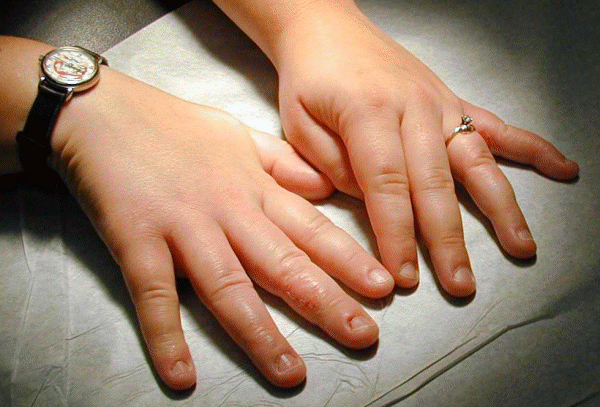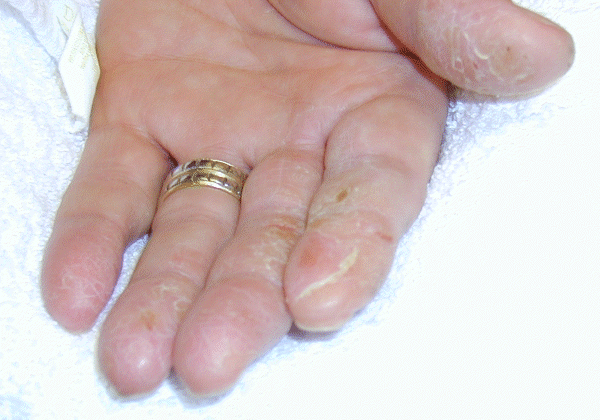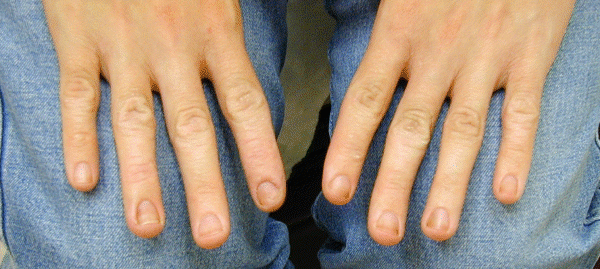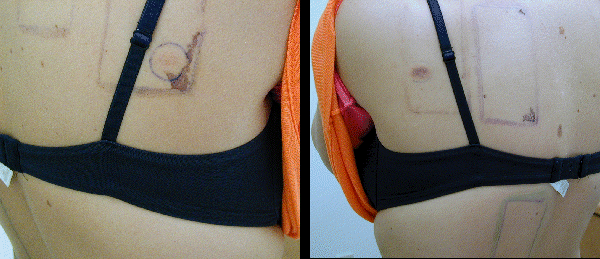Occupational Dermatoses
NOTE: This page is archived for historical purposes and is no longer being maintained or updated.
Slides 136 to 139
Slide 136 - Dental Assistant (allergy to glutaraldehyde and neomycin)

Workers frequently develop a secondary contact allergy to topical products such as antibiotics that they use to treat their work-related dermatitis. This dental assistant with hand dermatitis was allergic to glutaraldehyde that she used to sterilize instruments, and to neomycin.
Slide 137 - Optician - non-dominant hand dermatitis (allergy to ethyl acrylate)

Dermatitis primarily on the non-dominant hand develops in workers who grip an object while performing a more delicate task, often with a tool, with the dominant hand. This right-handed optician recalled only after patch-testing positive to ethyl acrylate that he sometimes held heated acrylic frames in his left hand, which caused his dermatitis.
Slide 138 - Hair stylist (allergy to hair dye and permanent wave solution)

Slide 139 - Hair stylist (patch test sites)

This hair stylist with hand dermatitis was allergic to para-phenylenediamine (hair dye) and glyceryl monothioglycolate (permanent wave solution). The latter penetrates both vinyl and rubber gloves and allergy may be a cause of permanent disability.
- Page last reviewed: January 5, 1998 (archived document)
- Content source:
- National Institute for Occupational Safety and Health Health Effects Laboratory Division (HELD)


 ShareCompartir
ShareCompartir